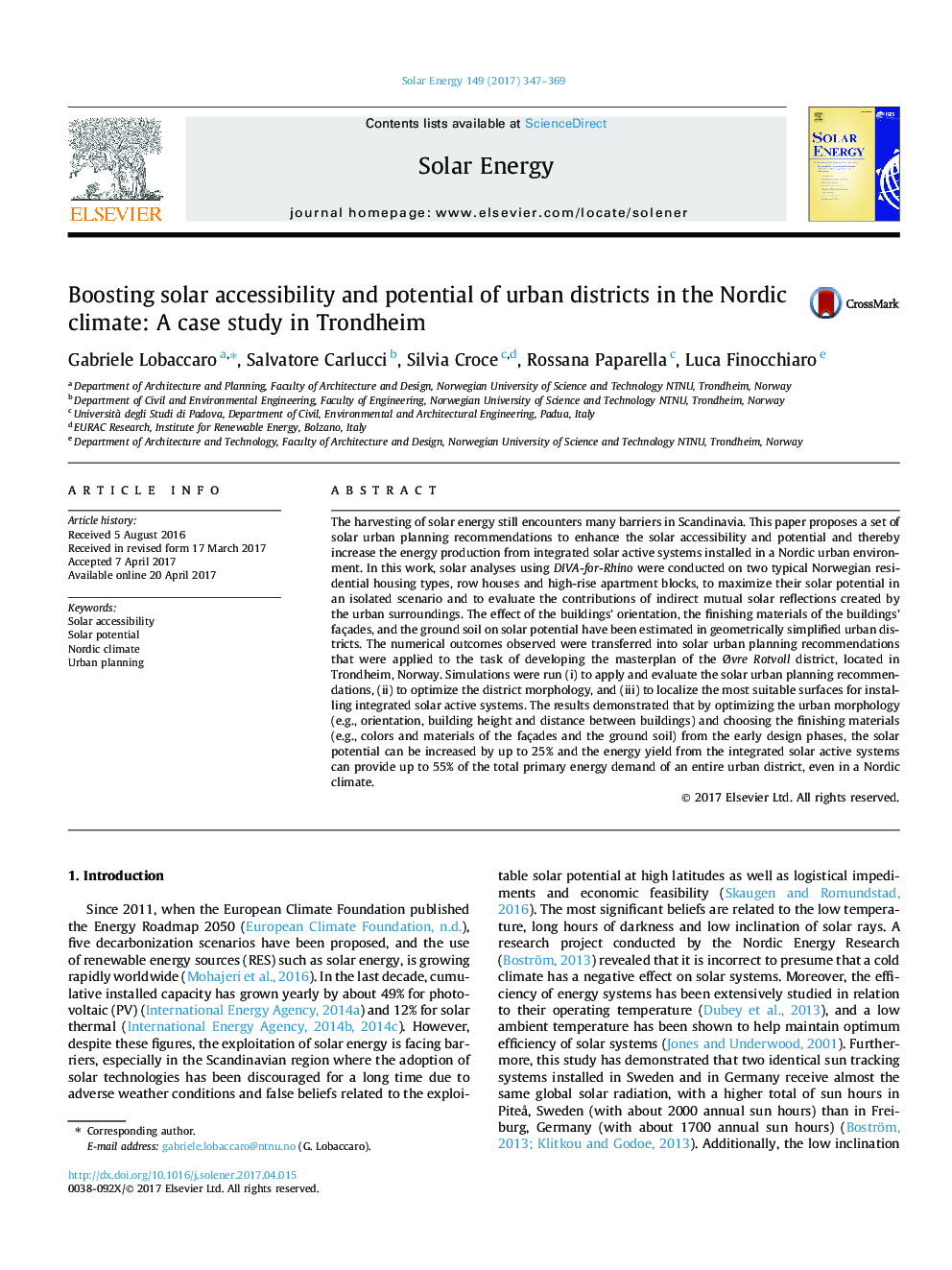| Article ID | Journal | Published Year | Pages | File Type |
|---|---|---|---|---|
| 5451092 | Solar Energy | 2017 | 23 Pages |
Abstract
The harvesting of solar energy still encounters many barriers in Scandinavia. This paper proposes a set of solar urban planning recommendations to enhance the solar accessibility and potential and thereby increase the energy production from integrated solar active systems installed in a Nordic urban environment. In this work, solar analyses using DIVA-for-Rhino were conducted on two typical Norwegian residential housing types, row houses and high-rise apartment blocks, to maximize their solar potential in an isolated scenario and to evaluate the contributions of indirect mutual solar reflections created by the urban surroundings. The effect of the buildings' orientation, the finishing materials of the buildings' façades, and the ground soil on solar potential have been estimated in geometrically simplified urban districts. The numerical outcomes observed were transferred into solar urban planning recommendations that were applied to the task of developing the masterplan of the Ãvre Rotvoll district, located in Trondheim, Norway. Simulations were run (i) to apply and evaluate the solar urban planning recommendations, (ii) to optimize the district morphology, and (iii) to localize the most suitable surfaces for installing integrated solar active systems. The results demonstrated that by optimizing the urban morphology (e.g., orientation, building height and distance between buildings) and choosing the finishing materials (e.g., colors and materials of the façades and the ground soil) from the early design phases, the solar potential can be increased by up to 25% and the energy yield from the integrated solar active systems can provide up to 55% of the total primary energy demand of an entire urban district, even in a Nordic climate.
Keywords
Related Topics
Physical Sciences and Engineering
Energy
Renewable Energy, Sustainability and the Environment
Authors
Gabriele Lobaccaro, Salvatore Carlucci, Silvia Croce, Rossana Paparella, Luca Finocchiaro,
